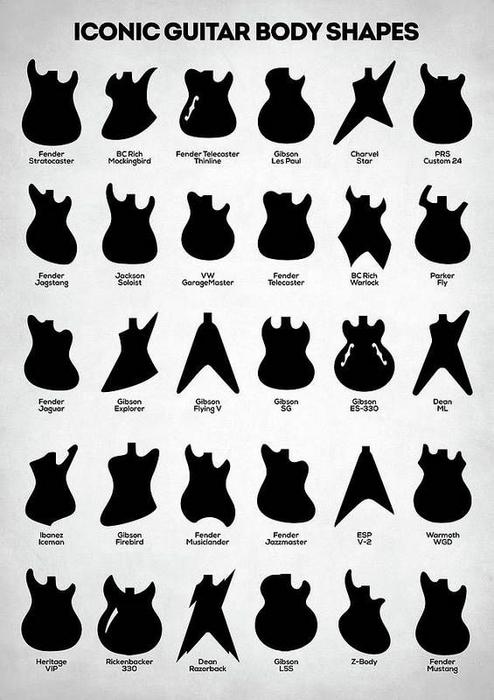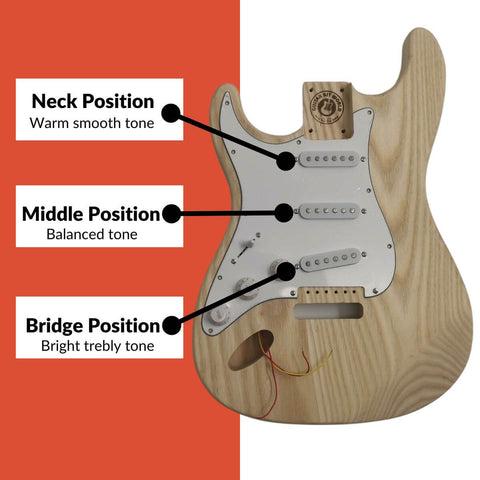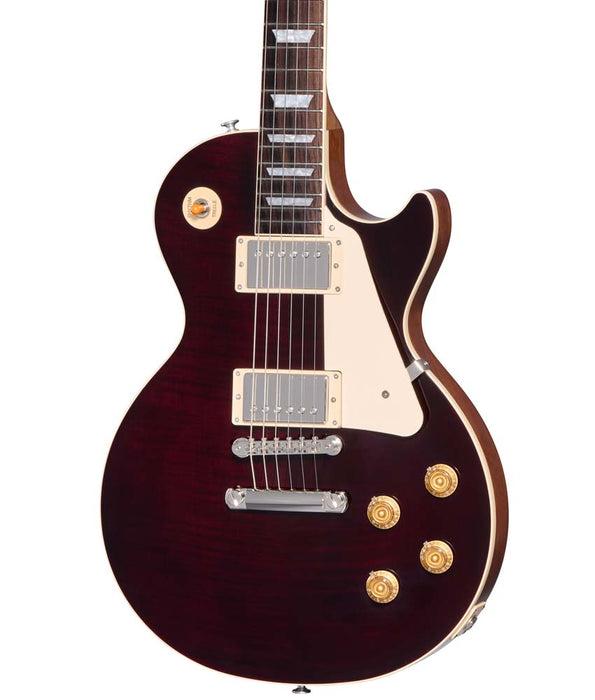I’ve spent my career immersed in the world of guitars, and few instruments intrigue and divide players quite like the Gibson SG and Les Paul. With countless hours logged strumming their strings, chatting with seasoned luthiers, and collaborating with professional musicians, I’ve delved deep into the idiosyncrasies of these iconic models. The SG and Les Paul have shaped the sound of music across genres, but which one deserves a spot in your collection? This question echoes among guitar aficionados worldwide, and I’ve packed this article with insights garnered from musicians who live and breathe these guitars. From contrasting body shapes to the subtleties of pickup configurations, there’s a lot to unpack here. If you’ve ever pondered whether the SG’s lighter frame is truly more comfortable or if the Les Paul’s legendary sustain stands up to the hype, you’re in the right place to find the answers.
Design and Build
Body Shape and Material

Did you know that the type of wood used can significantly impact a guitar’s resonance and overall sound? Through my interviews with countless luthiers, I’ve developed a deep respect for how the choice of materials plays a crucial role in the Gibson SG and Les Paul experience. The SG, with its lighter mahogany body, offers a unique blend of resonance and sustain, making it ideal for those seeking a vibrant and punchy sound. On the other hand, the Les Paul, known for its denser mahogany body and maple top, provides a thicker tone, characterized by its legendary warmth and depth. These wood types not only influence the tone but also the weight and comfort of the guitar during long sessions. Understanding the differences in the construction of these iconic models enhances your appreciation and aids in choosing the guitar that will best suit your style. Transitioning to the neck construction, let’s delve into how this affects playability.
Neck Construction and Feel

What if the shape of a guitar’s neck could change the way you play forever? As someone who has spent years exploring the subtleties of guitar craftsmanship, I can tell you this is no hypothetical scenario. The neck construction and feel play a crucial role in defining your uniqueness as a guitarist. Understanding the difference between a Gibson SG and a Les Paul opens up a world of playability nuances, heavily influencing your musical journey.
The SG’s slim neck and lightweight body may feel liberating during a lively session, yet it’s prone to neck dive. In contrast, the Les Paul offers a chunkier neck, giving a sense of robust stability without the cumbersome feel of neck dive. My experiences have shown me that a guitar’s neck determines more than just how comfortably your fingers navigate the fretboard; it establishes a physical bond between musician and instrument, where every curve and contour can either facilitate or challenge your skills.
Embracing these differences can profoundly affect your playing style and performance. As we delve deeper, you’ll see how these construction choices echo through every riff and chord, shaping the iconic sounds we’ll examine in their tonal characteristics and sound configurations. Stay tuned for more insights into how these legendary guitars can make—or break—your musical expression.
Tonal Characteristics
Pickup Configuration and Sound

In exploring the tonal characteristics of the Gibson SG and Les Paul, pickup configuration and sound emerge as pivotal elements. Could the choice of pickups be the secret to your signature sound? Through my years as Editor in Chief, I’ve delved deep into the debates surrounding humbuckers versus single coils and their sway over a guitar’s voice. Both models, SG and Les Paul, typically house humbuckers, yet the difference lies in their placement and type. The Les Paul often delivers a warmer, fuller tone, while the SG tends to cut through with a brighter edge. Understanding these nuances transforms your tonal palette, unlocking potential you may never have realized. It’s this precise pickup configuration that contributes substantially to the distinctiveness of each guitar, amplifying their innate versatility and appeal. As you grasp how pickups sculpt sound, you’ll harness them to refine your personalized tone, seamlessly enhancing your broader musical ambitions.
Tonal Range and Versatility

As a guitarist, I’ve spent countless hours exploring the intricate soundscapes of both the Gibson SG and Les Paul. When pondering what makes a guitar truly versatile across multiple genres, these models offer a compelling answer through their distinctive tonal ranges. The Gibson Les Paul, with its warm, full-bodied resonance, excels in blues and rock, enabling musicians to delve deep into emotive solos and powerful riffs. Its iconic humbucker pickups contribute to a rich, sustaining sound that’s hard to match. In contrast, the Gibson SG, known for its lighter, punchy sound, is a staple in the realms of hard rock and metal. Its bright tone cuts through mixes, making it perfect for high-energy performances and experimental sounds. By understanding how these tonal characteristics resonate across various guitar genres, musicians can leverage the unique properties of each guitar to enhance their creativity and expression. This deep understanding of tonal versatility not only enriches a player’s repertoire but also underscores the timeless appeal of these legendary instruments in today’s diverse musical landscape.
Playability and Performance
Action and String Height

As a guitarist, I’ve often pondered: What if an expertly set-up guitar could unlock your potential as a performer? With the Gibson SG and Les Paul, this is not a mere fantasy. One crucial aspect that impacts the playability and overall performance of these instruments is the action and string height.
Through my journey, I’ve learned that a well-thought-out setup is transformative. It not only enhances sustain but ensures that every note rings out true and clear. A strategic adjustment of action can turn a mundane experience into a refined and responsive journey across the fretboard.
Having played both the SG and the Les Paul extensively, I can affirm that optimal string height isn’t just a technical detail; it’s a pathway to expressing musical intent with precision and ease. The difference it makes can be palpable, making the guitar feel like an extension of oneself.
For anyone looking to squeeze out every ounce of creative expression, understanding and refining action and string height is key. Configure these elements to seamlessly blend your intent with the instrument’s inherent versatility, ensuring you make the most of every performance moment.
Comfort During Long Sessions

Could the weight of your guitar be affecting your performance more than you realize? After countless gigs, I’ve discovered that comfort can truly be the difference between an awkward performance and a memorable one. When discussing playability and performance with fellow musicians, the weight distribution and tendency of a guitar to neck dive often arise. This is where the Gibson SG and Les Paul offer unique advantages.
From my experience, the SG’s lighter body makes it a breeze for lengthy sessions. Its balanced weight distribution ensures there’s minimal neck dive, allowing me to focus purely on my music without constantly adjusting my grip. On the other hand, while the Les Paul is heftier, it’s this very solidity that many praise for contributing to its rich, resonant sound. But be prepared — playing a Les Paul requires a stride in endurance.
Finding the right fit is crucial for both comfort and performance. As I’ve shared stages across the globe, these considerations have consistently underlined the importance of selecting the right guitar to support not just the music, but the musician too. Next, let’s dive into how action and string height contribute to effortless playability, further elevating performance.
Musician Preferences and Genres
Popular Artists and Their Choices

Which legendary guitarists have shaped the legacy of the SG and Les Paul, and why? This question resonates deeply within the community of guitar discussion forums, illuminating how specific musicians’ choices shape the genres they influence. Having conducted numerous interviews with iconic players, I can attest to how the personal touch of these legends not only impacts their sound but also defines the broader musical preferences of enthusiasts worldwide.
Take, for instance, Tony Iommi, whose association with the Gibson SG established it as a staple in heavy metal. I vividly recall discussing with him how the SG’s lightweight build and strong sustain crafted the haunting riffs of Black Sabbath. Similarly, Jimmy Page’s unmistakable style with the Gibson Les Paul in Led Zeppelin’s classic tracks serves as a testament to its robust, versatile tone. These artists’ selections influence countless musicians, helping them to refine their style and preference.
Understanding these connections enhances my appreciation for the SG and Les Paul, situating them not only as instruments but as pivotal characters in the story of music. This insight naturally leads us to explore their genre-specific suitability and historical significance, weaving a rich tapestry of sound and style across decades.
Genre-Specific Suitability

Is there a quintessential guitar for every genre, or is it all a matter of personal taste? Over the years, I’ve seen firsthand how certain guitars resonate with artists across specific guitar genres. When considering the Gibson SG and Gibson Les Paul, each has carved out its niche in the music world, enhancing their unique allure and practicality.
The SG’s bright, biting tone has long made it a favorite for hard rock and metal players. Its sleek body and easy access to higher frets accommodate the requirements of these high-energy genres. In contrast, the Les Paul offers a rich, warm sound that’s deeply cherished in blues and classic rock. Its weight contributes to its sustain and depth, qualities musicians in these genres often seek to express warmth and emotion in their music.
Choosing between these two is more than picking a guitar – it’s about finding the right instrument that enhances and complements your playing style. My experience has shown me that aligning a guitar’s characteristics with your genre’s specific demands can unearth a world of musical possibilities, bridging the gap between musician and masterpiece.
Historical Context

Reflecting on the storied pasts of the Gibson SG and Les Paul, I’ve discovered that their legacies are more than just iconic designs and revered tones. They are intertwined with seismic shifts in the music world, each leaving an indelible mark. What pivotal moments in music history shaped the narratives of the SG and Les Paul? This question propels us into a fascinating journey through time, revealing how these revered instruments carved their distinct niches.
The Les Paul, birthed in the early 1950s, coincided with the electrifying birth of rock ‘n’ roll. It rapidly became an integral part of the rock scene, thanks in part to pioneers like Les Paul himself, who dreamed of an electric guitar with sustain like no other. As I explored its origins, I learned how its mahogany body and maple top generated a warm, robust sound that resonated through countless hit tracks.
Meanwhile, the SG emerged in the early 1960s, an era marked by innovation and rebellion. With its sleek, devilish design and faster neck, the SG became synonymous with rockers who wanted to push boundaries. It’s no wonder that legends like Angus Young of AC/DC chose it to define their soundscape. My research showed how the SG answered the call for lighter, more radical designs, forever changing the face of guitar music.
These guitars didn’t just witness history being made; they were the very instruments through which it was articulated, each strum and riff echoing the cultural revolutions of their times.
FAQs
What are the main differences between the Gibson SG and the Les Paul?
Which guitar is better for beginners, the Gibson SG or Les Paul?
Is the Gibson SG more suitable for any specific music genres compared to the Les Paul?
How do the materials used in the Gibson SG and Les Paul affect their sound?
Are there any famous musicians known for playing the Gibson SG or Les Paul?
Conclusion
In closing, my journey with the Gibson SG and Gibson Les Paul has been a captivating exploration of sound and storytelling. Each guitar holds a distinct place in music history, but ultimately their value is defined by the emotions they evoke in those who wield them. Will you choose an SG or a Les Paul, or perhaps discover a new journey through their unique sounds? This isn’t just about analyzing body shapes or tonal characteristics; it’s about the personal connection we forge with these instruments. The SG, with its edgy design, offers a raw, biting sound that cuts through the mix, while the Les Paul provides a rich, warm tone that fills the room with depth. Whether you’re drawn to the SG’s sleek body or the Les Paul’s iconic curves, you’ll find both guitars are more than tools—they are vessels for musical expression. What stories will your fingers tell? The choice is yours.

Michael Molenda, the transformative Editor in Chief of Guitar Player magazine from 1997 to 2018, revolutionized its content and expanded its influence. With over 2,500 published works, including in-depth interviews and technical analyses, he’s a giant in guitar journalism. Post-Guitar Player, he launched CONTENT BY MOLENDA and co-founded music websites, bringing his unmatched expertise to the forefront of music marketing. At Fretterverse, Molenda continues to shape the guitar world with insightful commentary and trendsetting journalism.
